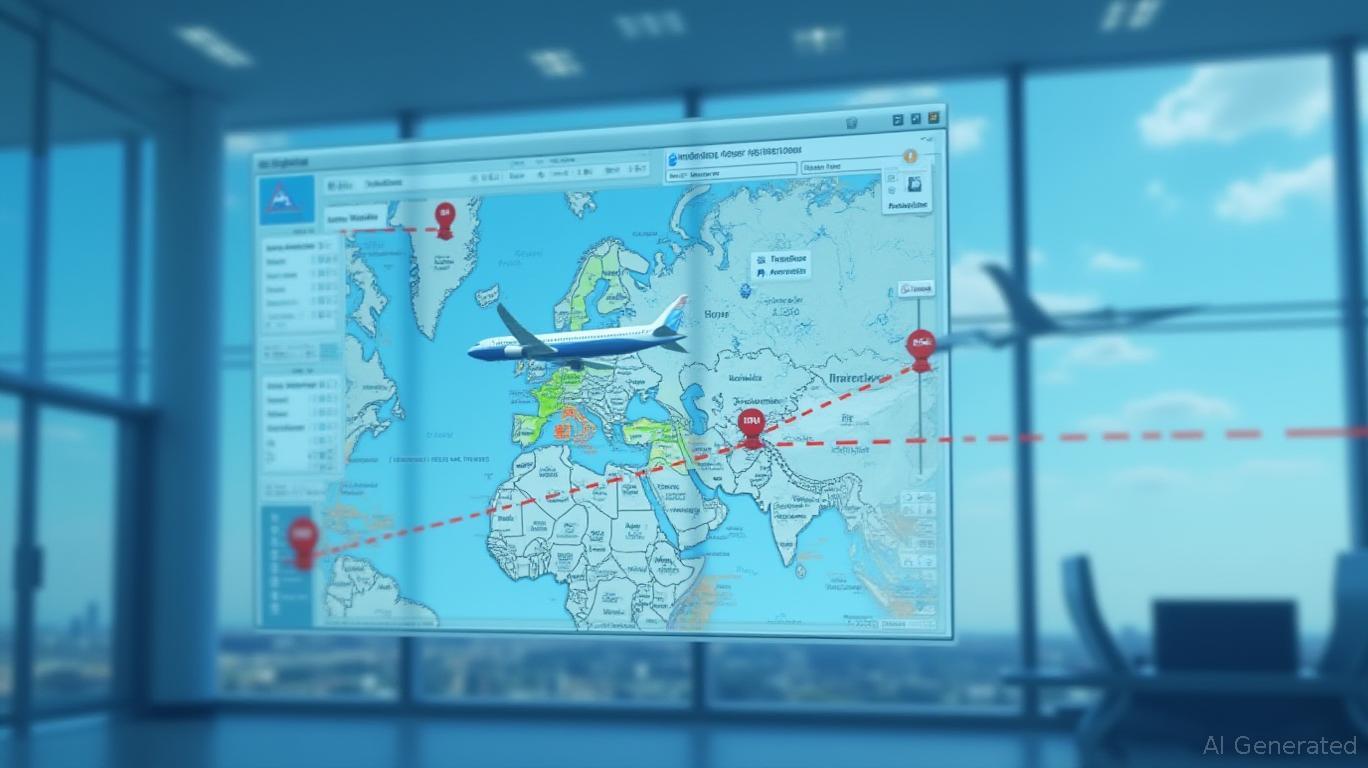FlightAware and ADS-B: Pioneering Real-Time Data Infrastructure for Aviation Logistics Resilience
The aviation logistics sector is undergoing a quiet revolution. As global supply chains grapple with volatility—from extreme weather to geopolitical tensions—real-time data infrastructure has emerged as a critical lifeline for cargo visibility and operational reliability. At the heart of this transformation is FlightAware, a leader in flight tracking technology, and the ADS-B (Automatic Dependent Surveillance-Broadcast) system, which is redefining how airlines,
, and governments manage air cargo. Together, they are unlocking unprecedented efficiencies, reducing delays, and creating ESG-aligned opportunities.
The ADS-B Revolution: From Visibility to Predictability
ADS-B technology, now mandatory for most aircraft in controlled airspace (per FAA rules), enables aircraft to broadcast precise location, altitude, and speed data. This has created a data goldmine for logistics players. FlightAware's integration with systems like ArcGIS Velocity transforms raw ADS-B data into actionable insights:
- Geofencing: Alerts when aircraft enter hazard zones (e.g., wildfires or turbulence).
- Route Optimization: Reduces fuel burn by 10% via direct path planning, aligning with ESG goals.
- After-Action Analysis: Post-crisis reviews of flight paths to improve emergency response.
The global ADS-B market is projected to grow at an 8.5% CAGR to $3.67 billion by 2032 (per FlightAware's market analysis). This growth is fueled by cargo operators' demand for end-to-end visibility, particularly for high-value or perishable goods.
FlightAware's Edge: Data as a Strategic Asset
FlightAware's FlightFeeder network—a global grid of over 20,000 ADS-B receivers—provides 99% coverage of commercial flights. This infrastructure underpins its $508.25M-to-$780M flight tracking market dominance (2023–2031). Key advantages include:
1. Real-Time Transparency: Cargo managers can track shipments in near-real time, reducing delays and rerouting risks.
2. Cost Savings: Airlines like FedEx and UPS leverage FlightAware's data to cut fuel costs and streamline routes.
3. ESG Alignment: ADS-B's efficiency gains directly reduce carbon footprints, appealing to ESG-focused investors.
FlightAware's community-driven model—where hosts contribute data via affordable hardware—ensures broad coverage even in remote regions. This contrasts with competitors like FlightRadar24, which relies more on commercial partnerships. The popularity of “FlightRadar24” as a search term (over 1.2M monthly queries) underscores the sector's demand for transparency, a space FlightAware dominates.
Investment Opportunities: Boeing and the ADS-B Ecosystem
While FlightAware remains private, its ecosystem partners offer indirect exposure:
- Boeing (BA): A leader in aircraft manufacturing, Boeing's 737 MAX and 777X fleets are fully ADS-B compliant. As airlines replace older planes (per Boeing's 2025 outlook of 43,600 new planes by 2044), ADS-B adoption will surge.
- Satellite Providers: Companies like Inmarsat and Iridium support global ADS-B coverage via satellite relays, critical for oceanic and polar routes.
Risks and Considerations
- Regulatory Hurdles: Tariffs (e.g., U.S.-China trade wars) could delay aircraft production, impacting ADS-B adoption timelines.
- Cybersecurity: ADS-B signals remain unencrypted, posing spoofing risks. FlightAware's partnerships with cybersecurity firms like Boeing's Avionics Security Solutions are critical to mitigate this.
The Bottom Line: Invest in the Infrastructure of Tomorrow
FlightAware's data platform and ADS-B's penetration into logistics mark a paradigm shift. For investors:
1. Go Long on Boeing: Its ADS-B-ready aircraft and ESG initiatives align with the sector's growth.
2. Watch for FlightAware's IPO: Its valuation could rival Peloton-scale outcomes if publicized.
3. Bet on Satellite Tech: Global coverage is non-negotiable for ADS-B's full potential.
The “FlightRadar24” phenomenon—a proxy for market demand—is here to stay. For supply chains, the era of opaque cargo logistics is ending. Embrace the data-driven future: invest in the tools that turn uncertainty into precision.
JR Research

Comments
No comments yet